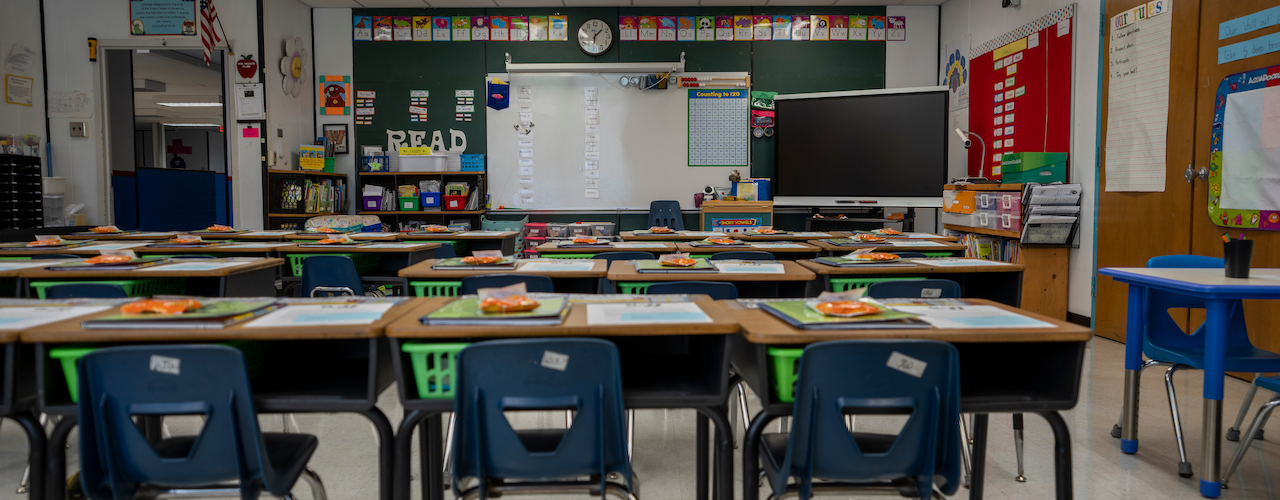September 2023 Research Rundown
By Madie Spartz
For September’s Research Rundown —our curated list of recent, relevant research we think is worth adding to the education equity conversation—we’re sharing research on topics related to last month’s release of MCA scores and attendance data, as well as the effects of school resource officers (SROs) on student outcomes, another issue widely debated in recent weeks. The articles explore:
- strategies for increasing school attendance post-pandemic,
- components of effective tutoring programs, and
- the effects of SROs on school environment, violence prevention, and student discipline
I hope you find it informative. If you come across any research you think EdAllies should know about, please email me.
Attendance Playbook: Smart Strategies for Reducing Student Absenteeism Post-Pandemic
FutureEd, May 2023
This report outlines strategies for increasing attendance in the context of our post-pandemic absenteeism crisis. Interventions are broken down into three tiers, from preventive measures to intensive support. Tier 1 strategies are the most plentiful and include things we may not typically associate with attendance, such as school-based health services, free meals for all students, and restorative discipline practices. These efforts are meant to increase community in schools and prevent absences before they occur. Tier 2 interventions are more targeted, intended to reduce barriers to school attendance for at-risk students. They include providing mentors and tutors, targeted home visits, and establishing schools as “safe-havens” for immigrant students and families. Tier 3 supports are intensive and designed for students missing 20% or more of the school year. They include interagency case management and addressing housing insecurity.
Why This Matters in Minnesota
Increasing consistent attendance is urgent in Minnesota. The Minnesota Department of Education recently released attendance data from the 2022-23 school year, and just 69% of students are attending school at least 90% of the time. Before the pandemic, the number of students regularly attending school was 85%. Given that students are still academically behind post-COVID, we need to keep them in the classroom. Research shows that increased instructional time is key to closing learning gaps. Working to understand why students are missing school more often, and then developing targeted action plans, should be a priority for schools and districts to get attendance numbers back up.
A Systematic Review of Research on Tutoring Implementation: Considerations when Undertaking Complex Instructional Supports for Students
Annenberg Institute at Brown University, August 2023
This new literature review synthesizes findings from 33 different studies to offer an overview of the evidence on what makes a successful tutoring program. The authors found that support from school leaders who direct school funding, space, and time is critical to successful implementation of a tutoring program. Individual tutors were most successful when they developed positive relationships with their students and used these strong relationships to target instruction to each student’s needs. Interestingly, while research shows that tutoring sessions are most effective when conducted in groups of 3 students or fewer, this report found that small groups alone are not enough to make a program effective; curriculum needs to be both appropriate for student needs and tutors’ skill level.
Why This Matters in Minnesota
Minnesota students have not recovered from COVID learning loss, with 2023 MCA scores remaining stagnant or getting worse. Furthermore, Minnesota’s unacceptable gaps along race and socioeconomic status are persisting. Given that tutoring and other methods of increased instructional time are proven to help students recover and accelerate learning, knowing what makes tutoring programs effective can help us design, invest in, and scale models that will help students get back on track.
The Thin Blue Line in Schools: New Evidence on School-Based Policing Across the U.S.
University at Albany, State University of New York, April 2023
This study examines the relationship between school resource officers (SROs) and school environment & student outcomes. Using data from schools across the country, the authors compared schools with SRO placements to similar schools without SRO presence. They found that SROs in schools “modestly reduce” some forms of violence in schools, like fights and threats, but do not reduce gun-related incidents. However, these reductions come at “very high cost to students.”
The authors found that SROs increase the use of out-of-school suspensions by up to 80%, expulsions by up to 90%, and student arrests & police referrals by up to 50%. Those disciplinary and police actions were consistently largest for Black students, students with disabilities, and male students. The researchers also looked at effects on grade retention and chronic absenteeism, but didn’t find meaningful relationships to SRO presence in either case.
Why This Matters in Minnesota
This year, a new law placed limits on the use of prone restraint and other dangerous holds in schools. This sparked a debate about SROs in schools, as many law enforcement agencies terminated their contacts as a result of the new law. While there was little debate, and no proposed changes or amendments during the legislative session, police agencies pushed the Governor to call a special session to revise the law this fall—and it will likely get top billing during the 2024 session.
Regardless of the current political moment, it’s well-documented that Minnesota has stark racial disparities in discipline practices, with Black and Indigenous students 8 and 10 times more likely, respectively, to be suspended or expelled than their white peers. Students with disabilities are twice as likely to face suspension or expulsion than students without disabilities. If we are going to solve disparities in discipline, it’s imperative we understand the pros and cons of various approaches to school safety and school discipline so that we can build sound, informed policy.

